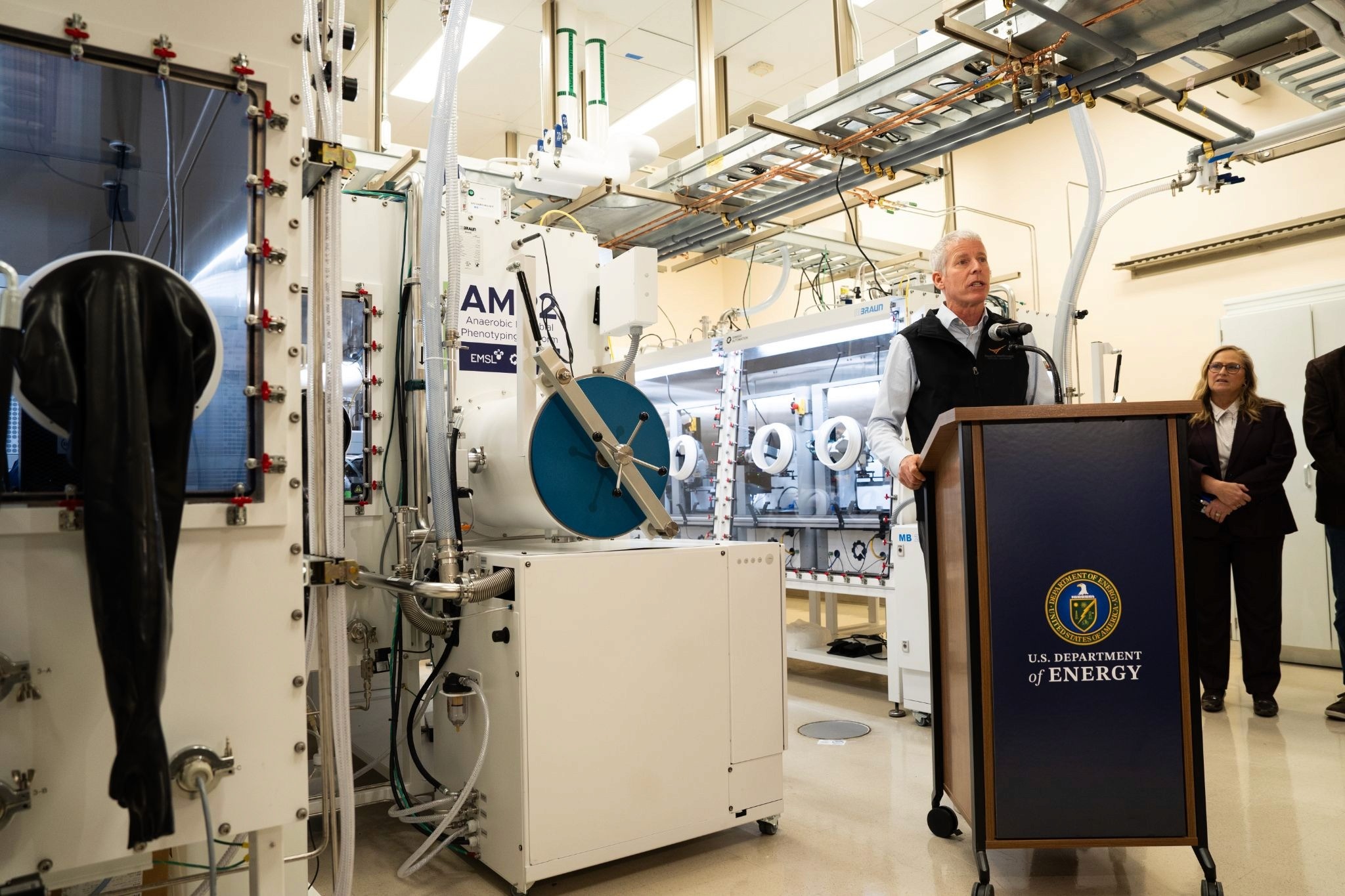Environment
Aviation and Maritime Biofuels Get Sustainability Boost from Novel Enzyme
Brazilian researchers unveil OleTPRN, a groundbreaking enzyme poised to redefine the biofuel landscape for global aviation
Aug 18, 2023
Galdzer (Canva)
In the intricate dance of sustainable energy, Brazilian scientists have taken a giant leap, aiming to transform the biofuel landscape for aviation and maritime industries.
Lead researcher Letícia Zanphorlin of the Brazilian Biorenewables National Laboratory (LNBR) at the Brazilian National Center for Research in Energy and Materials (CNPEM) excitedly shared, “After three and a half years of meticulous research, we've identified an enzyme that could well supersede traditional catalysts in thermochemical processes, paving the way for aviation biokerosene.” Findings from the new study were published recently in PNAS.
The spotlight is on OleTPRN, an enzyme from the cytochrome P450 superfamily, specifically sourced from the bacterium Rothia nasimurium. This remarkable metalloenzyme could unlock innovative biotechnological paths, harnessing feedstocks ranging from oleaginous biomass like soy, macaw palm, and corn to lignocellulosic biomass found in sugarcane by-products and the paper industry.
Zanphorlin elaborates on the enzyme's prowess: “This enzyme, compared to its conventional counterparts, adeptly decarboxylates fatty acids, achieving impressive yields and showcasing flexibility with various carbon chain structures. Its deoxygenation capability is particularly noteworthy, a critical process in producing SAF [sustainable aviation fuel].”
She underscores a salient point: oxygen's detrimental effect on aviation components. This limitation has restricted the use of popular biofuels like ethanol and biodiesel in aviation, underscoring the need for novel biocatalysts. Typically, aviation fuel production has leaned on metals like cobalt, platinum, and palladium.
“These metallic catalysts, essential for the deoxygenation reaction, demand extreme conditions, both in terms of temperature and pressure. Their environmental footprint, coupled with the subsequent technological waste and potential financial implications, is concerning,” Zanphorlin remarked.
Diving deeper into the recent study, one learns of the multifaceted role enzymes play. Acting as biological accelerators, enzymes hasten chemical reactions in nature's myriad living organisms. In this investigation, the enzyme adeptly converted fatty acids into alkenes, pivotal chemical intermediaries.
Zanphorlin shed light on the comprehensive approach adopted: “We scoured public databases for enzymes with specific attributes, leveraging bioinformatics tools and microbial genomic data. Synchrotron light, an electromagnetic radiation spectrum, played a pivotal role, helping us discern the enzyme's three-dimensional structure.”
She added, “We meticulously assessed each amino acid's placement in the enzyme's atomic composition, detailing its interactions with fatty acids. This gave us a comprehensive understanding of the enzyme's potential applications.”
Parallel endeavors at CNPEM focused on patenting and analyzing the biological pathways' technical, economic, and environmental facets.
Zanphorlin emphasized CNPEM's strengths: “Our 2021 patent application for the enzyme underscores our robust capabilities. We not only ideate but also scale technological solutions, ensuring we continually refine the innovation.”
She paints a promising picture for aviation biofuels harnessing this enzyme, highlighting Brazil's abundant lignocellulosic waste from sugarcane. Furthermore, she suggests that with minor adaptations to existing biofuel infrastructure, renewables could seamlessly integrate, eliminating the need for extensive overhauls.
Wrapping up, Zanphorlin envisions a bright future: “The enzyme's adaptability holds promise across industries. With alkenes forming the foundation of numerous chemical industry products, including polymers and plastics, and their significance in sectors like food, cosmetics, and transportation, the horizon looks promising.”


















